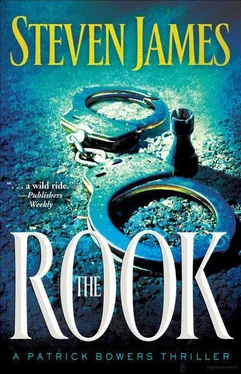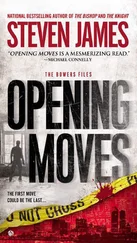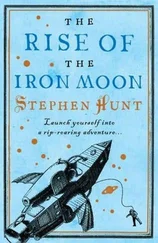Steven James - The Rook
Здесь есть возможность читать онлайн «Steven James - The Rook» весь текст электронной книги совершенно бесплатно (целиком полную версию без сокращений). В некоторых случаях можно слушать аудио, скачать через торрент в формате fb2 и присутствует краткое содержание. Жанр: Полицейский детектив, на английском языке. Описание произведения, (предисловие) а так же отзывы посетителей доступны на портале библиотеки ЛибКат.
- Название:The Rook
- Автор:
- Жанр:
- Год:неизвестен
- ISBN:нет данных
- Рейтинг книги:3 / 5. Голосов: 1
-
Избранное:Добавить в избранное
- Отзывы:
-
Ваша оценка:
- 60
- 1
- 2
- 3
- 4
- 5
The Rook: краткое содержание, описание и аннотация
Предлагаем к чтению аннотацию, описание, краткое содержание или предисловие (зависит от того, что написал сам автор книги «The Rook»). Если вы не нашли необходимую информацию о книге — напишите в комментариях, мы постараемся отыскать её.
The Rook — читать онлайн бесплатно полную книгу (весь текст) целиком
Ниже представлен текст книги, разбитый по страницам. Система сохранения места последней прочитанной страницы, позволяет с удобством читать онлайн бесплатно книгу «The Rook», без необходимости каждый раз заново искать на чём Вы остановились. Поставьте закладку, и сможете в любой момент перейти на страницу, на которой закончили чтение.
Интервал:
Закладка:
“A hundred forty-eight, total.”
“Slipping in your old age, huh?”
“You don’t know the half of it.”
I asked Aina for a pair of latex gloves and snapped them on. After all, evidence is evidence, even if it’s covered with soot. Then she signaled for two of the firefighters resting on the curb to lend Lien-hua and me their boots. They grudgingly obliged, and we pulled them on and followed Aina into the blackened mouth of what used to be someone’s front door.
17
“Whoever started this fire,” Aina said, “did so after the officers finished processing the scene of John Doe’s suicide. We’re guessing 2:00 a.m. as the time the first fuel was ignited.”
Detective Dunn and his team must have finished up as quickly as they could to keep the trolleys on schedule. It didn’t surprise me, though. It all seemed simple enough: a drug-crazed homeless guy throws himself in front of a trolley. Period. Except that the timing and location of the fire told me that things weren’t as simple and clear cut as they seemed.
“Any chance the fire was accidental?” I asked Aina.
“Unlikely. You’ll see when we get to the point of origin.”
“Witnesses?” Lien-hua asked.
Aina led the way through the soot-stained kitchen. “No one who’s talking, but that’s no surprise. People in this neighborhood don’t generally like talking to the police. Oh, but we did find the young man who was at the tobacco store.”
“Anything?” I asked.
“He’s a foreign exchange student from Korea. We spoke with him early this morning. He didn’t witness the suicide and was at his apartment when the fire began. I can’t see any connection. The store owner didn’t see anything, either.”
I nodded. “Lien-hua,” I said. “Talk me through your profile.
Just the highlights.”
“It pains you to say that, doesn’t it? To ask me for the profile?” “More than you know.”
Aina must have given her a questioning look because Lien-hua tightened her voice and explained, “Pat thinks profiling is a complete waste of time.”
“Not a complete waste of time,” I said. “It keeps a lot of novel-ists off welfare.”
Lien-hua stepped on one of the boards underfoot hard enough to crack it, and I wondered if the board represented anything specific to her. Probably best not to ask.
“Well,” she said. “We have no eyewitnesses, no footprints, or other incriminating physical evidence of any kind, so he’s forensi-cally aware. He’s experienced, older than most arsonists. Probably midthirties. He’s precise and exacting, takes pride in his work. Possibly admires news reports about the fires to his friends: ‘See that fire? That guy really knows what he’s doing.’ Things like that. He works alone on the fires. Lives alone. Has military experience.”
“Military experience?” asked Aina.
“A significant percentage of arsonists have military experience.
Until I can show otherwise, I’m starting with the hypothesis that ours does too. He doesn’t seem to start the fires for profit or to mask another crime. And since he doesn’t stick around to watch the buildings burn, I doubt he’s doing it for the thrill. He has another motive, though I’m not sure yet what it is.”
“Let’s not forget timing,” I said. “Each of the fires, except for this fire last night, was set when the wind was less than ten miles per hour. That’s rare in San Diego.”
“So what changed his pattern?” Lien-hua asked.
“Well, Agent Jiang.” I cracked my knuckles. “That’s what I’m here to figure out.”
She shook her head. “You’ve been watching too many cop movies.”
I was trying to think of a witty reply when Aina paused at the threshold of the living room and asked, “So, how many fires have you worked?” She directed the question to both of us.
“Enough,” I said.
“Not so many,” replied Lien-hua. “My specialty is serial homicides.”
“Well,” said Aina, “a few basics. If we can identify the direction and spread of the fire, we can narrow down the most likely location of its origin.” She pointed at the wall. “Heat transfers from the flame to the surface of the walls or the ceiling. The farther the flames move from the fuel package, the less heat they’ll have, and the less damage they’ll cause.”
Lien-hua’s eyes scanned the room like careful lasers. Beautifully dark, mysteriously inviting lasers. Then she pointed. “So, here, the wallpaper is scorched and peeling…” She stepped into the room beside us, looked over the walls again. “But here, the wallpaper at that same height is gone, and the fire ate into the drywall. So, this room is probably closer to the place the fire started.”
I love watching her work.
Actually, I don’t mind watching her, whatever she’s doing.
“Si,” Aina said. “Of course, other factors can affect heat flow-the building materials, room layout, airflow, and so on, but the extent of surface damage is one of the first things we look for.”
As we picked our way through the corpse of a home, it struck me how similar Aina’s job is to mine. Both of us evaluate the evidence, study the way something moves through space and time, and then use what we know about patterns to pinpoint the point of origin.
She studies the flow and movement of smoke and flames; I study the flow and movement of people. But the principle is still the same.
The secret to solving a case boils down to timing and location.
I heard a ring tone. Aina glanced down, tugged her phone off her belt. “Excuse me, I need to take this. You two look around. I’ll be back in a minute.”
Lien-hua and I stepped carefully past some blackened boards. Nearly all of the structural supports and door frames were still in place, but most of them were at least partially charred by the blaze.
I directed Lien-hua’s attention to the ceiling on both sides of a door frame. “See how only one side is covered with soot?”
She walked back and forth beneath the doorjamb, examining the ceiling on each side. “Yes.”
“Buoyant gases move though the air similar to the way water flows down a river,” I said. “When water meets a rock, it passes around the rock, and then some of the water curls back toward the rock.”
“You sound like an ex-raft guide.”
“Guilty as charged.”
“It’s called an eddy, right?”
I nodded. “Sometimes the eddies are so strong the water actually flows back upstream. That’s what happens when hot gases pass through a building. As the gas passes through a doorway, some of it curls back toward the ceiling, creating an eddy of air that doesn’t consume the wood but leaves a sooty residue. By identifying these eddies, we can work backward through a structure-”
“To find the source of the fire.”
“Right.”
We passed through several more rooms, Lien-hua carefully observing the eddies above the doorjambs, working with surprising acuity to lead us to a room at the back of the house. From the evidence I’d seen so far, I agreed that this room was probably the source of the blaze. “Not bad for a profiler,” I said.
“Yeah, well, this environmental stuff isn’t that complex. Maybe I should write a novel about it.”
“Touche.”
The electricity in the house was off, but enough sunlight cut through the window for us to see around the room. I noted that the glass in the window frames was still intact. With an exacting gaze, Lien-hua traced a line up the wall toward the ceiling. “These marks, here; what do they mean?”
“The fire plume made those. Usually, when you find them, they indicate proximity to the point of origin.”
I heard Aina’s footsteps by the doorway. “Very good, Dr. Bowers,” she said. “When a fire is started against a wall, the wall does two things: it reflects heat and doesn’t allow the cooler air to escape the blaze. This creates a taller flame than a similar fire with the same heat release rate located in the middle of a room. In corners, the effect is increased, creating an even higher fire plume. And see how the floor directly beneath the plume is consumed? That’s where he put the accelerant.”
Читать дальшеИнтервал:
Закладка:
Похожие книги на «The Rook»
Представляем Вашему вниманию похожие книги на «The Rook» списком для выбора. Мы отобрали схожую по названию и смыслу литературу в надежде предоставить читателям больше вариантов отыскать новые, интересные, ещё непрочитанные произведения.
Обсуждение, отзывы о книге «The Rook» и просто собственные мнения читателей. Оставьте ваши комментарии, напишите, что Вы думаете о произведении, его смысле или главных героях. Укажите что конкретно понравилось, а что нет, и почему Вы так считаете.












